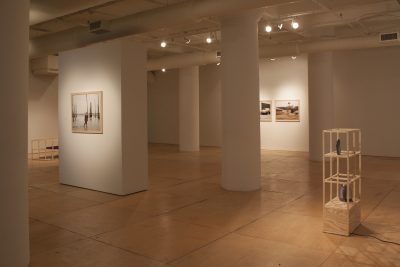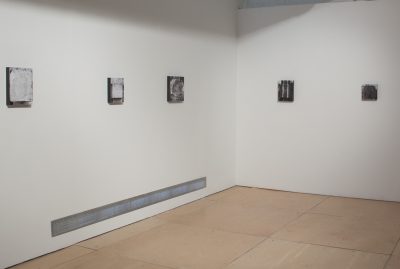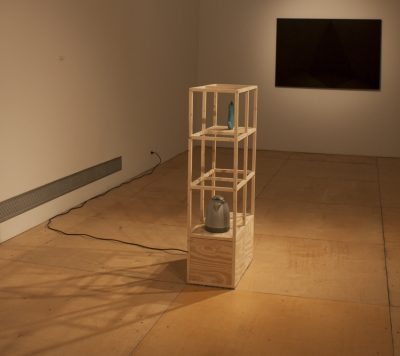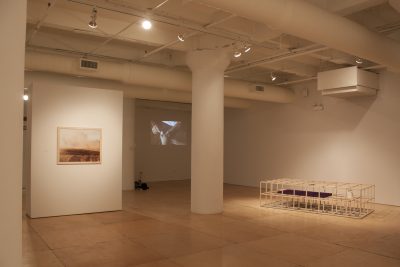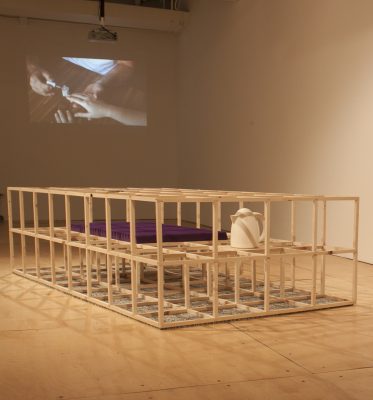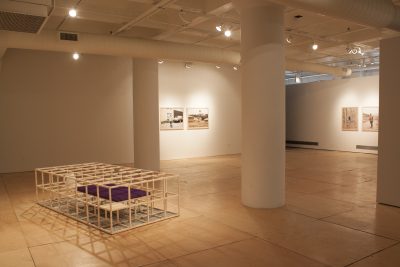Exhibitions
ABOUT THE EXHIBITION
The first in a series of five UIC MFA Thesis Exhibitions in Studio Arts, Photography, Moving Image, and New Media Arts.
Before us, a thick current runs: opaque, swirling, and rushing ahead. Carrying the sediments of history, the land it flows through, and the myth it inhabits. Thin spots on the surface reveal something profoundly significant, huge, and alive; wakened for a moment.
Matt Brett uses the persistence of matter and energy as the moral and conceptual foundation of his work. He considers how the immutability of matter is entangled with human affairs and looks to these entanglements for inspiration.
Houston Cofield’s current work, Common Ground, combines photographs, objects, and film to create a fictional narrative about a specific region in North Mississippi. Family, myth, and history play important roles in the way Cofield’s work narrates the land and people he encounters. He seeks to uncover the way history, both literally and fictionally, resonates in this region.
Colleen Keihm attempts to connect to places and people so that there may be a greater understanding of time, care, and the structure that happens in between. Her desire to connect occurs through representations of documenting the precise application of nail polish and reconstituting an object as a relic. Performance, photography, and video allow her to enter spaces ritualistically and engage with people so that they may generate situations together and experiment with elicited empathy.
Carried through by the rhythms of places and people who inhabit them, Melissa Myser is constantly wandering with an open ear. Myser ’s deep familial roots in the American West inform the stories, characters, and myths of her film and video works.
Artist Websites:
ARTISTS
Matt Brett, Houston Cofield, Colleen Keihm, and Melissa Myser.
SUPPORT
The 2014 MFA Thesis Exhibitions are supported by Gallery 400 and the School of Art & Art History at the University of Illinois at Chicago.


